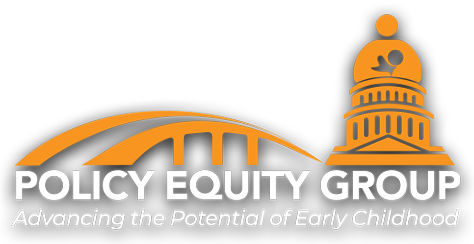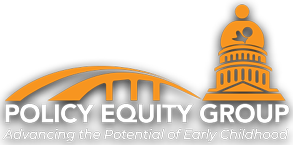On February 3, 2023, the political news and opinion website FiveThirtyEight published Everyone Agrees That Universal Pre-K Is Important. So Why Don’t More States Have It? While the spotlight on early care and education (ECE) is important, the media coverage once again focused solely on Universal Pre-K (UPK) without examining the full story.
While we applaud the progress policymakers have made in supporting the care and development of young children, the public must understand that UPK on its own is not a good policy, despite the eagerness of governors and the President to support it. The missing message is that UPK alone can decimate the supply of infant and toddler care – hurting providers and parents who depend on it.
Infant and toddler care is the most expensive and most difficult form of child care to access (2023 Department of Labor data available here). President Biden’s Build Back Better Act correctly addressed the supply, affordability, and quality of infant and toddler care alongside funding Pre-K for 3- and 4-year-olds. We are calling for more reporting and public discourse that focuses on the importance of expanded Pre-K and infant and toddler care.
Today’s Four-year-old First Needed Infant and Toddler Care
Pre-K is just one age in the early education continuum from birth until kindergarten. A singular focus on UPK triggers negative consequences for other parts of the continuum. Specifically, sole funding for 4-year-olds prioritizes care of preschool-age children at the expense of children under four. Anecdotal evidence suggests policies targeted to UPK have had negative impacts on private providers of infant and toddler care. This reflects an enduring history of US policy ignoring or hesitating to offer public early education for infants and toddlers. Although US policy provides subsidies for infant and toddler care for low-income families (i.e., the Child Care Development Fund program) and offsets through tax credits, little attention is given to the quantity or quality of care available to children ages birth to three years.
The US continues to experience a market failure in infant and toddler care, and we need policies that address the disparity. The supply of this care remains low across the US despite parent demands. In a study of child care availability in 19 states and DC, researchers found for every available licensed child care slot, there are four infants and toddlers in need of care. The demand is associated with lower child-to-teacher ratios and group sizes required to provide safe and developmentally appropriate care to young children. For educators, this factor translates to higher labor costs thus a larger price tag for infant and toddler care. The total cost of infant care is approximately $15,000 per child per year to meet basic state standards and $27,100 per child per year when caregivers and teachers are paid at parity with public school teachers, with benefits and low child-teacher ratios.
Yet, the funding mechanisms used in ECE do not adequately account for this reality. Child care costs are often covered by families, and tuition costs can only be so high to be within some semblance of reach for parents. Further, child care subsidies, when available, do not cover the true cost of care, especially for infants and toddlers. This makes it hard for families to afford care, and hard for providers to cover costs or make a livable wage from this type of care.
Providers often rely on 4-year-old care to offset the actual cost of infant and toddler care (learn more by listening to this Planet Money podcast). But UPK’s coverage of 4-year-old care does not translate to fixing the cost of infant and toddler care. It may make it worse. Two unintended consequences we are deeply concerned about are deprivation and crowd-out.
Deprivation
Pre-K, in most states, is provided through a mixed-delivery system of public schools, private providers, and community-based organizations. The extent to which states rely on public schools varies with some emphasizing Pre-K spots in public schools and others distributing more heavily to non-public school sites.
If states or localities place the bulk of new UPK slots in public schools and do not increase subsidies for infant and toddler care, this could have devastating ripple effects in the system. In general, public schools do not serve infants and toddlers but could entice 4-year-olds, potentially depriving community-based and private organizations of care for 4-year old’s that offset their cost of providing infant-toddler care (see this study of universal Pre-K in New York City for an example of impacts on day care center seats for young children and quality). In our work, we have heard, and we continue to hear, how prioritized funding for prekindergarten negatively impacts the entire ECE system. During listening sessions across Maryland in 2019, we heard about the decreasing supply of family child care providers, many of whom lost 4-year-olds to free pre-K programs and, consequently, struggled to cover the more costly care for infants and toddlers.
Crowd-out
Even when a state pursues a heavily mixed-delivery approach, with emphasis on private and public UPK slots, there is still the potential to “crowd-out” infant and toddler care wherever there is public funding for 4-year-old pre-kindergarteners. When private providers and public providers receive UPK funding, it may incentivize serving 4-year-olds over infants and toddlers. Four-year-old care and education is less costly. Additionally, UPK funding would serve as a consistent, dependable, and adequate source of funding compared to sources that are less reliable, such as tuition from parents or Child Care Development Fund (CCDF) subsidies. Thus, funding focused solely on 4-year-olds may incentivize provision of care to this age range, at the expense of infants and toddlers.
Supporting Families from the Start
The COVID-19 pandemic highlighted how precarious the child care market is for families and how critical child care availability is for family well-being, both in terms of financial and mental health. It also demonstrated how imperative child care is to sustaining a thriving labor market. UPK relieves financial burden and stress for some families, but without accompanying infant and toddler supports, it does not address the needs for families with very young children. For example, in recent focus groups we conducted in Florida with families earning low incomes, parents discussed the immense and stressful burden of finding child care and how that stress was only alleviated once the child was four: the age Florida offers free pre-K – highlighting that while 4-year-old care is nice, it’s not sufficient. Legislation such as DC’s Birth-to-Three for All DC Act of 2018 demonstrate policies that support families from the start are possible.
As governors on both sides of the aisle heroically continue to try and fill the gap that Congress and the unsuccessful Build Back Better Act left in its wake, we hope they will keep in mind that a Universal Pre-K approach that neglects infant and toddler care will not solve the child care crisis – and may in fact make it worse. Reporters, advocates, foundations, consultants, and other stakeholders play an important role in reminding everyone of the interconnectivity of Universal PreK and the supply, affordability, and quality of infant and toddler care. Our children, their families, and the child care workforce are depending on it.


